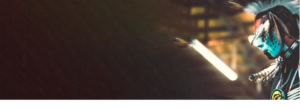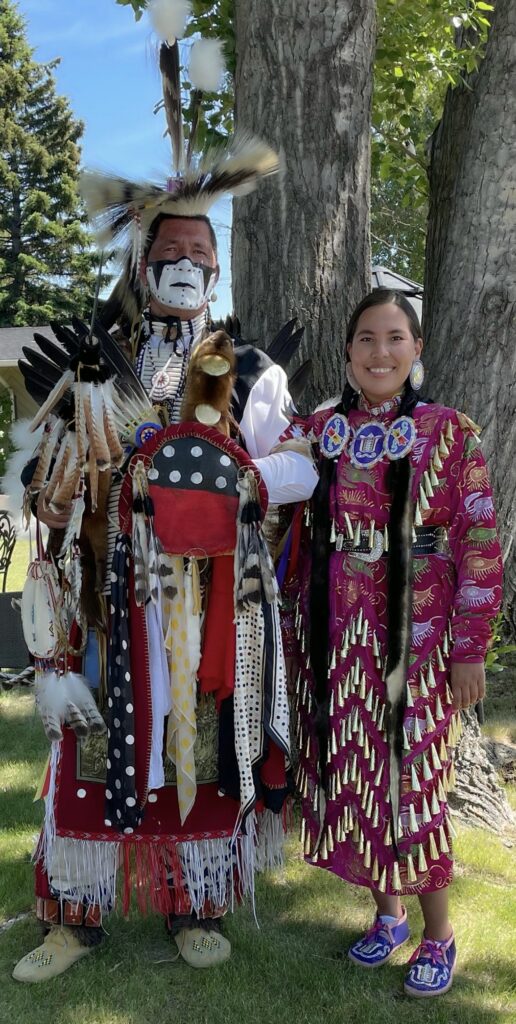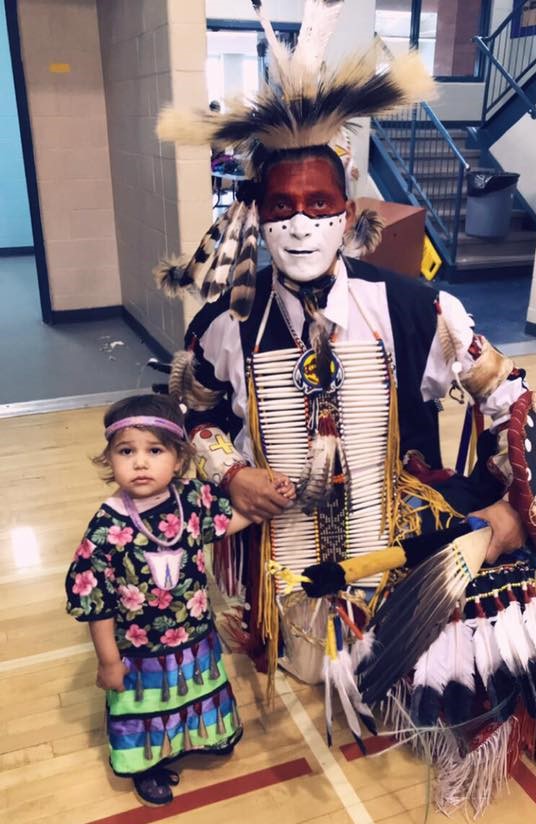Indigenous Perspectives – An Interview with Charles Woods

Indigenous Perspectives – An interview with Charles Woods
AUTHOR: SHERRY WOODS
What is your background/heritage?
Omah’kapi’si’ina (Wolf Boy), Charles Woods comes from the Siksika Nation, his mother is from Siksika and his father is of German and French ancestry. He is a part of the Aakaipokaiksi clan (meaning many children).
What was it like growing up away from your community at a young age?
Similar to a lot of Indigenous people who are seeking out what their Indigenous identity means to this day, Charles grew up not knowing much about his culture and language. His mom is a direct survivor of the Residential school atrocities, but she held onto her language as best she could. She speaks fluent Blackfoot and was a Blackfoot teacher that helped to teach Indigenous youth the language. Charles grew up learning more English in his household than his own Blackfoot language, this was because the English language was more common around his local community, and his parents thought if he learned their own language that it might hold him back in Canadian society.
DID YOU KNOW: Indigenous languages have commonly not been passed down because of fear of being punished, and up until the 1970’s there were government policies that banned and discouraged Indigenous people from speaking their languages, having ceremonies, and performing dances.
My daughter inspired me to dance. I felt her spirit and I knew one day I would dance beside her.
— Charles Woods
Can you explain your journey of finding yourself through your culture?
Charles was a part of the first generation that missed out on speaking and learning their traditional tongue. Most of Charles’ life was him providing for his own family and working. Since he was a little boy, he longed to dance in the powwow circle, but his parents were too busy to help Charles with his dream of being a dancer. Around five years ago, when all his own kids had become adults, Charles started dancing men’s traditional. He watched all the dancers, learning the footsteps, and taking in the power of the songs. What inspired him to dance was watching his daughter dance jingle, he could see how much she loved her culture and how through dance she is passing down the culture to his granddaughter.

“My daughter inspired me to dance. I felt her spirit and I knew one day I would dance beside her,” Charles says.
Charles watched YouTube tutorials on sewing and eventually hand-made his own regalia and beaded everything from scratch. Today he dances all over the country attending powwows, he is well known in the circle, has made a brotherhood, and is finding healing.
“Culture brought me a lot of healing.”
In order to heal from the traumas endured by residential schools many Indigenous people have turned to traditional healing ceremonies. These traditional healing ceremonies consist of sweat lodge sessions, pipe and smudge ceremonies. These traditions help to bring back the past, help others move forward, and have helped bring Charles back to his traditional roots.
“Through ceremony, I’m learning a lot. From our elders and knowledge keepers.”
To put it in perspective on what Indigenous People did before the colonization and religion – they had native spirituality. Indigenous culture is strong, there’s a resurgence, and the people are going back to their culture.
Can you tell us about the meaning of your regalia?
Charles regalia is made up of parts of animals and other materials including feathers, beads, an eagle talon, a sweetgrass loop, and porcupine quills. The bustle that he wears on the back is made of eagle feathers and represents two eagles fighting. He also paints his face in black and white paint. They are ceremonial designs and designs passed down from his clan, which he uses to inspire and guide his paint and regalia patterns/beadwork.
Charles says that “Traditional dancers are telling a story of their battle; it could be a victory or defeat. It’s a warrior dance. I dance for the people.”

KNOWLEDGE CHECK:
What is Men’s Traditional Dance?
Men’s Northern Traditional dance is derived from the Plains Indigenous people, such as Sioux, Blackfoot, Crow, Omaha and others. This dance provides an image of past warriors who would return from hunting or battle and tell their story through dance to their tribe.
In the past, a traditional dancer was typically an elder who had earned the right to carry eagle feathers. Today, however, traditional dancers are of all ages. Long ago, veteran warriors carried a shield and lance, or coup stick to indicate their status. The eagle feathers worn by the dancers are arranged in a single bustle and worn on their lower back. The bustles are circular which represent the cycles of mother earth and the unity of everything, and other regalia are symbolic of a dancer’s relationship with nature and Creator. The eagle is the most sacred bird because it flies the highest and carries prayers of the people skyward, making its feathers very sacred. It is an Indigenous relative and is a part of Indigenous families.
The colours and designs in each individual dancer’s regalia can represent their families, clan, or tribal name.
Videos of Men’s Traditional Dance
References:
-
https://www.thecanadianencyclopedia.ca/en/article/powwow-dances
